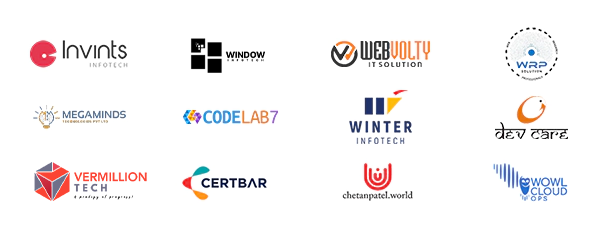CEO Tools
While managers focus on project execution, higher authorities such as owners and CEOs concentrate on setting and achieving organizational goals. This module is designed to help you clearly define your objectives and track your progress towards fulfilling them. Additionally, it enables you to measure your efforts using a wishlist and maintain a repository of pertinent documents for reference and guidance. This tool also facilitates regular analyses, such as SWOT, and allows you to effectively manage and track their historical data.
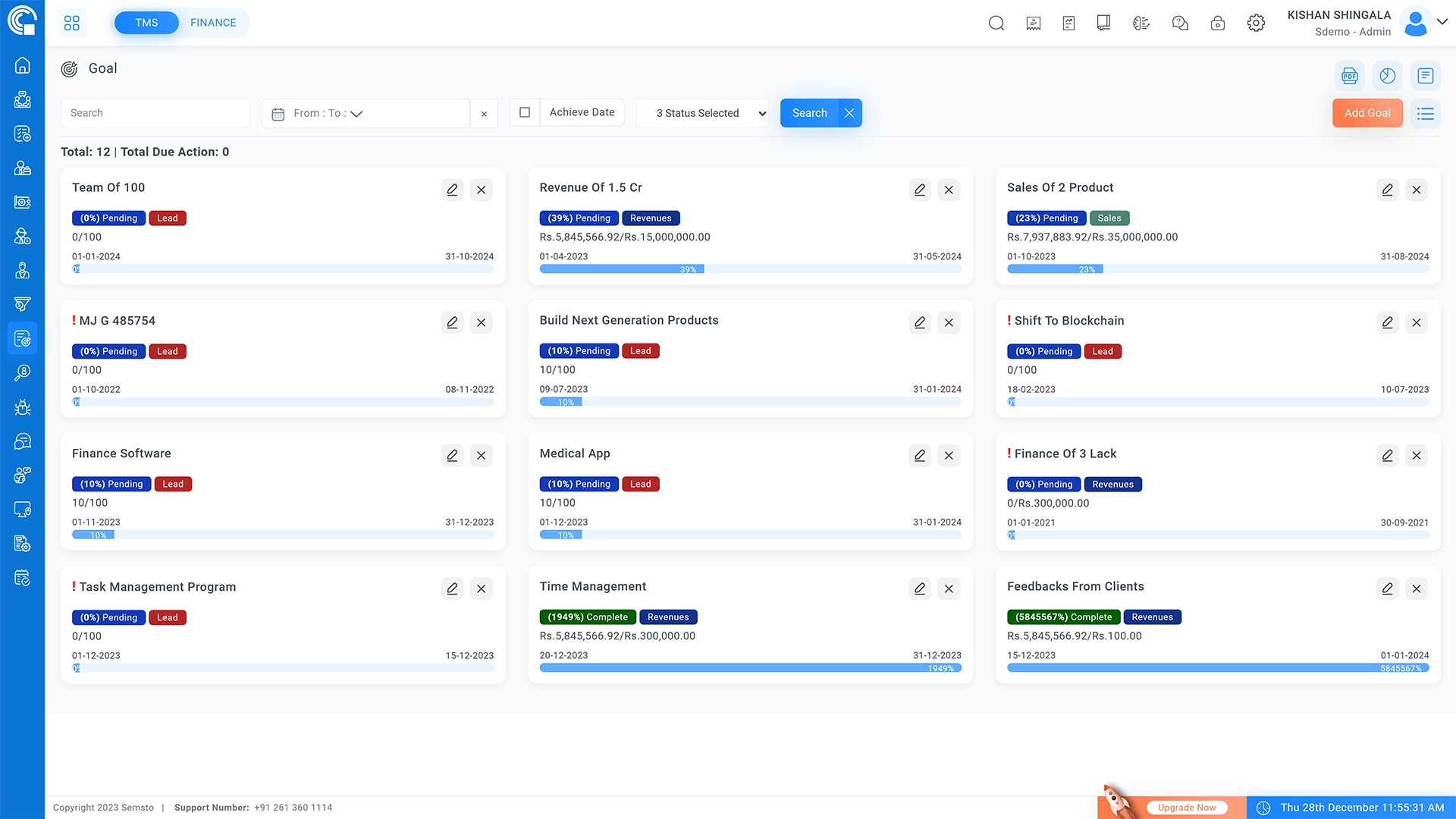
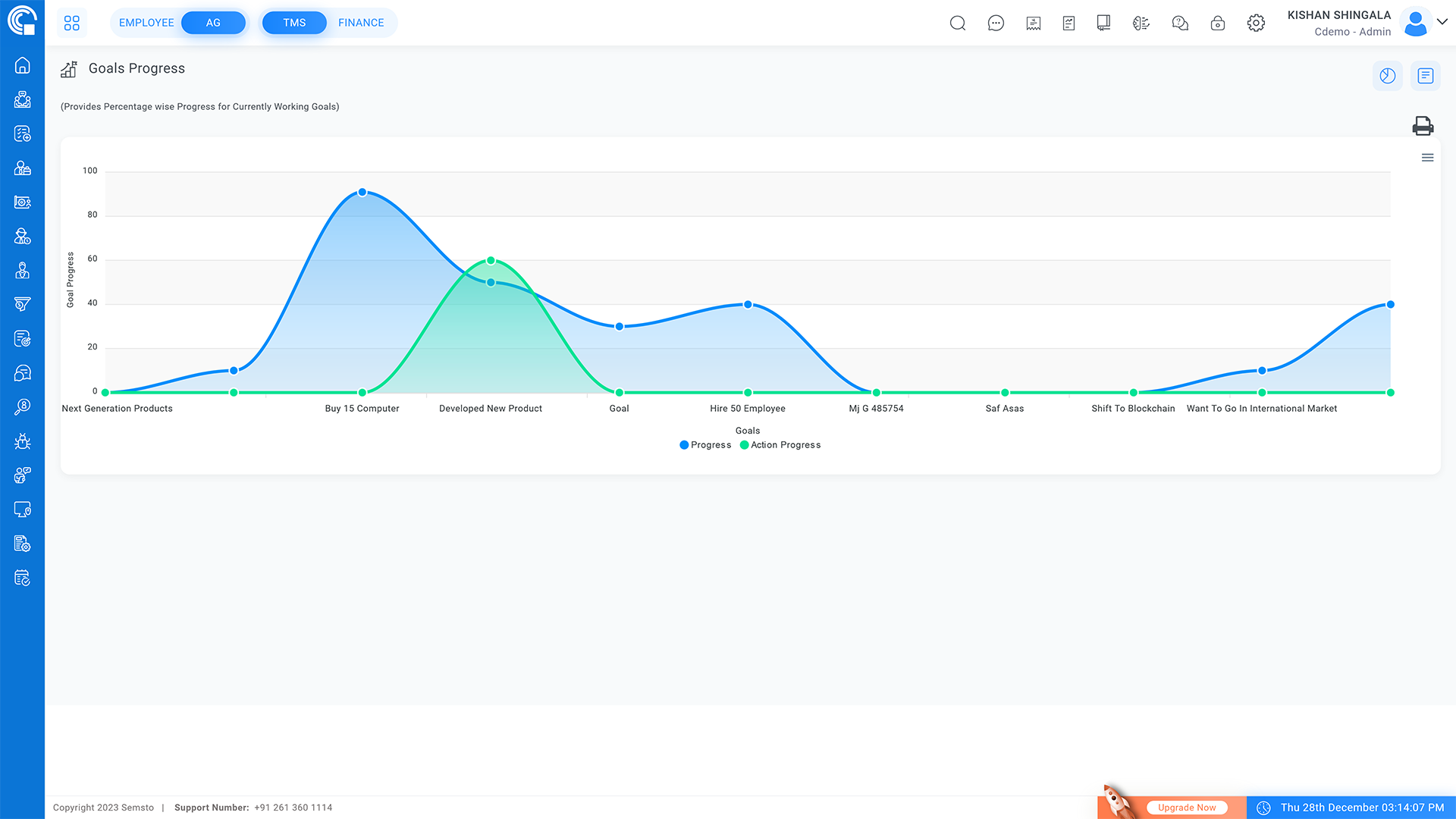
Establish clear objectives and continuously track advancements toward these goals.
Automate Tracking of Goals Linked to Leads, Sales, and Recruitment: Seamlessly monitor goals that are directly connected with key business activities like lead generation, sales performance, and hiring processes.
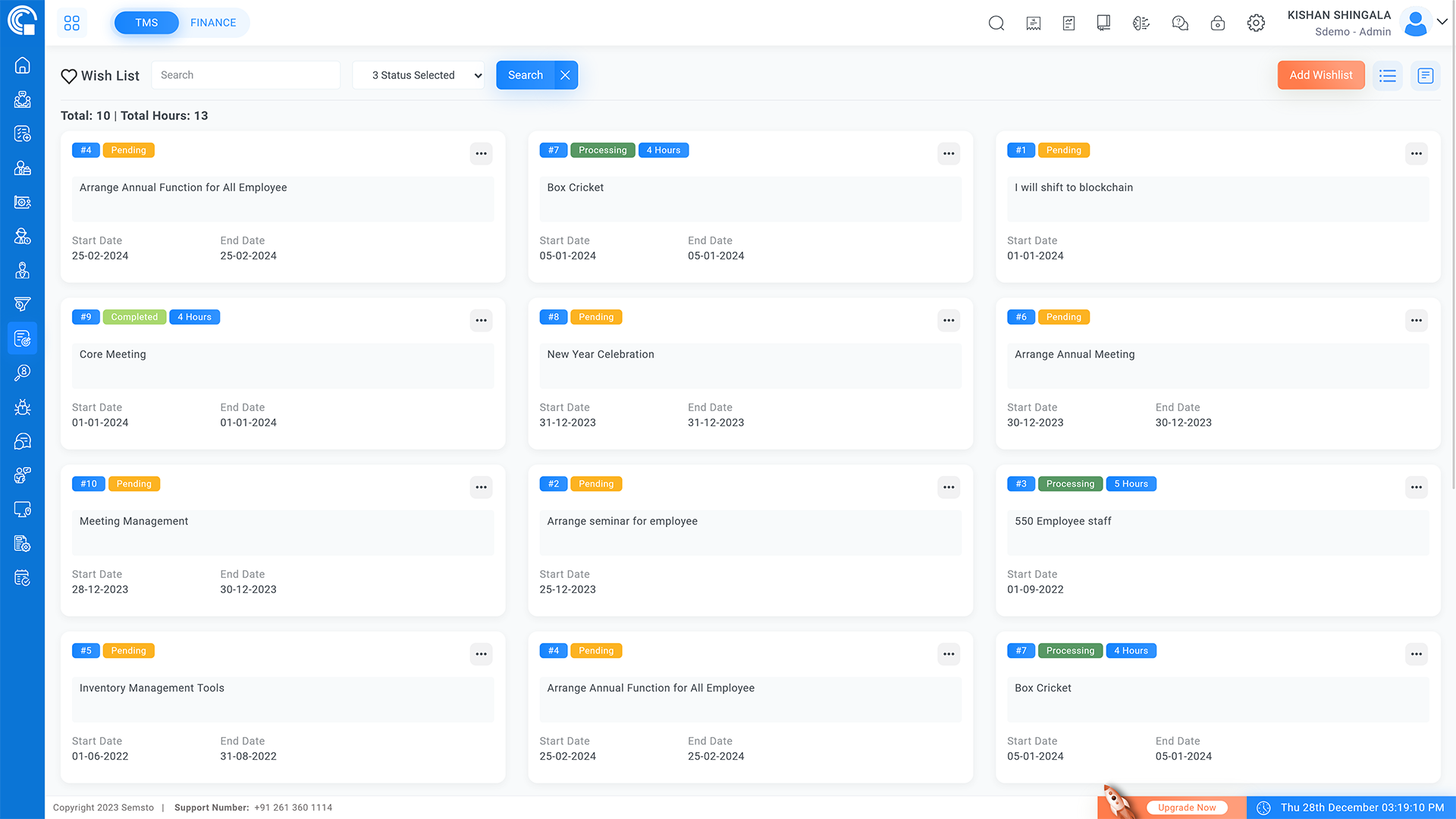
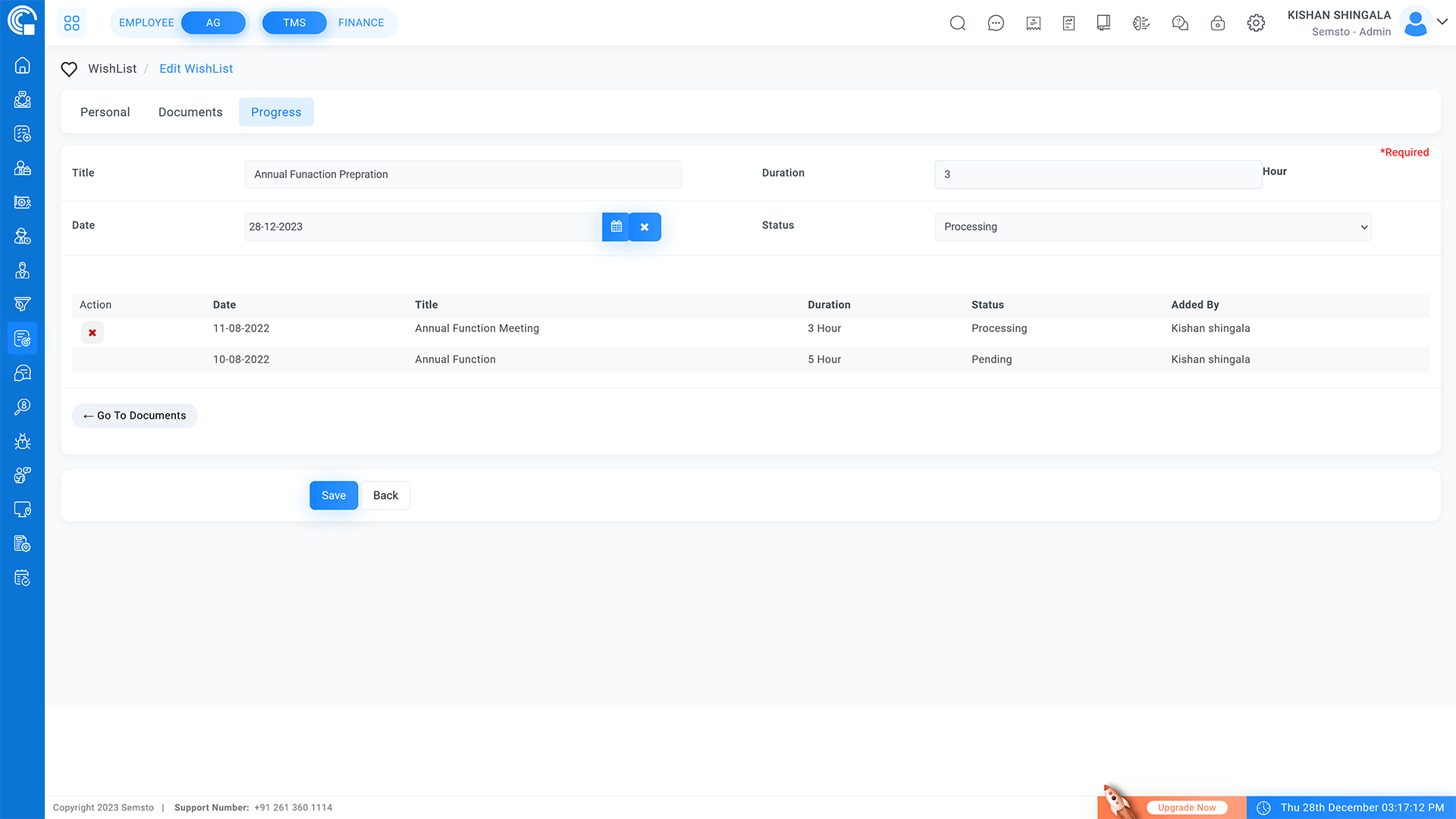
Craft a wishlist to prioritize tasks and keep track of the time invested in each.
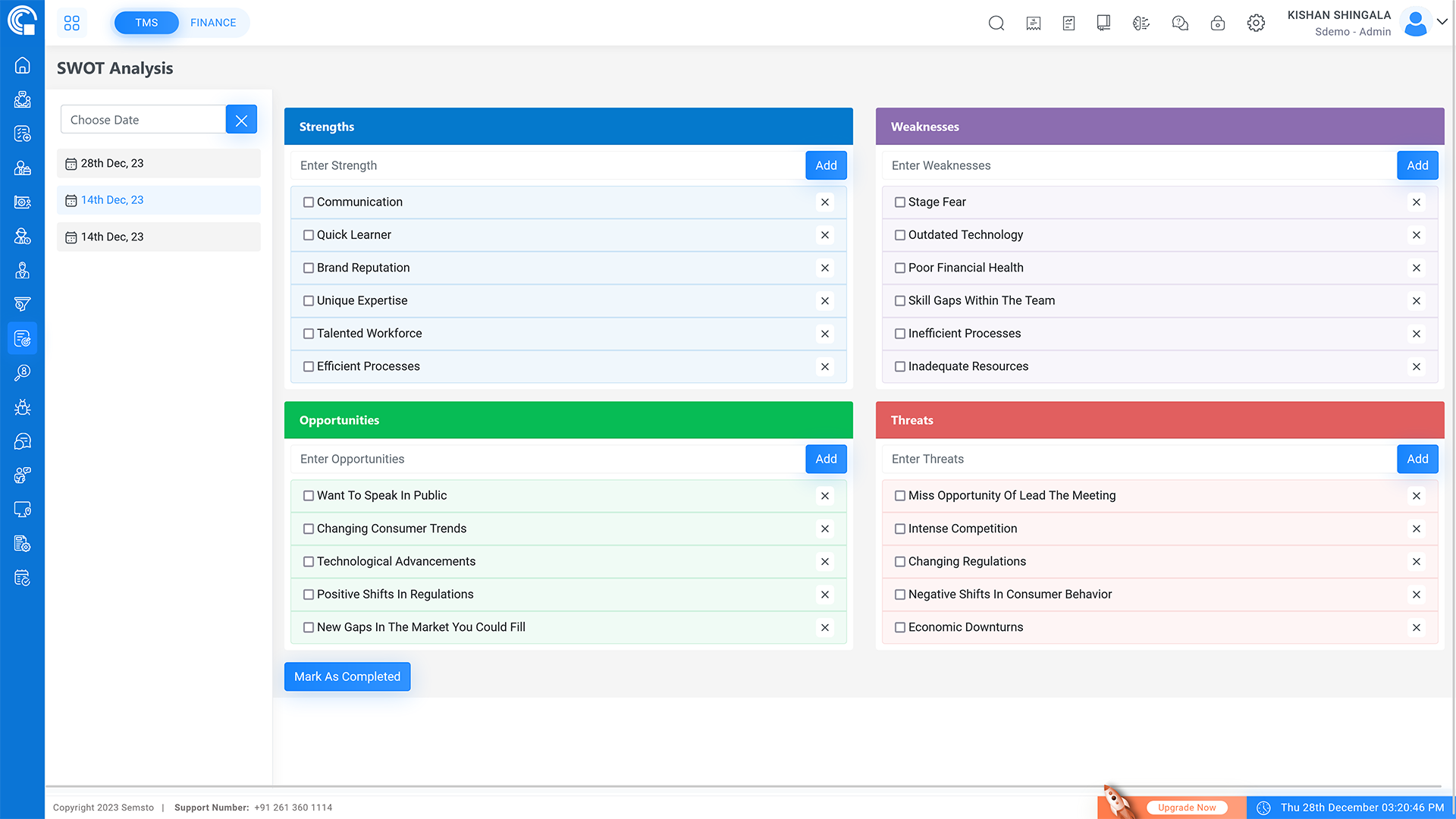
Conduct various analyses on a regular basis, such as SWOT analysis, to gain insights and guide strategic decisions.
Capabilities
Goal Management
Clearly define your objectives using accurate information, establish actionable steps towards achieving them, and assign appropriate importance to each action. As you complete each task, mark it as 'done' to effectively monitor your progress towards the goal.
For goals related to Sales, Leads, and Recruitment, tracking is automated based on updates in the corresponding sections.
Additionally, this system empowers your employees to monitor and manage their personal goals.
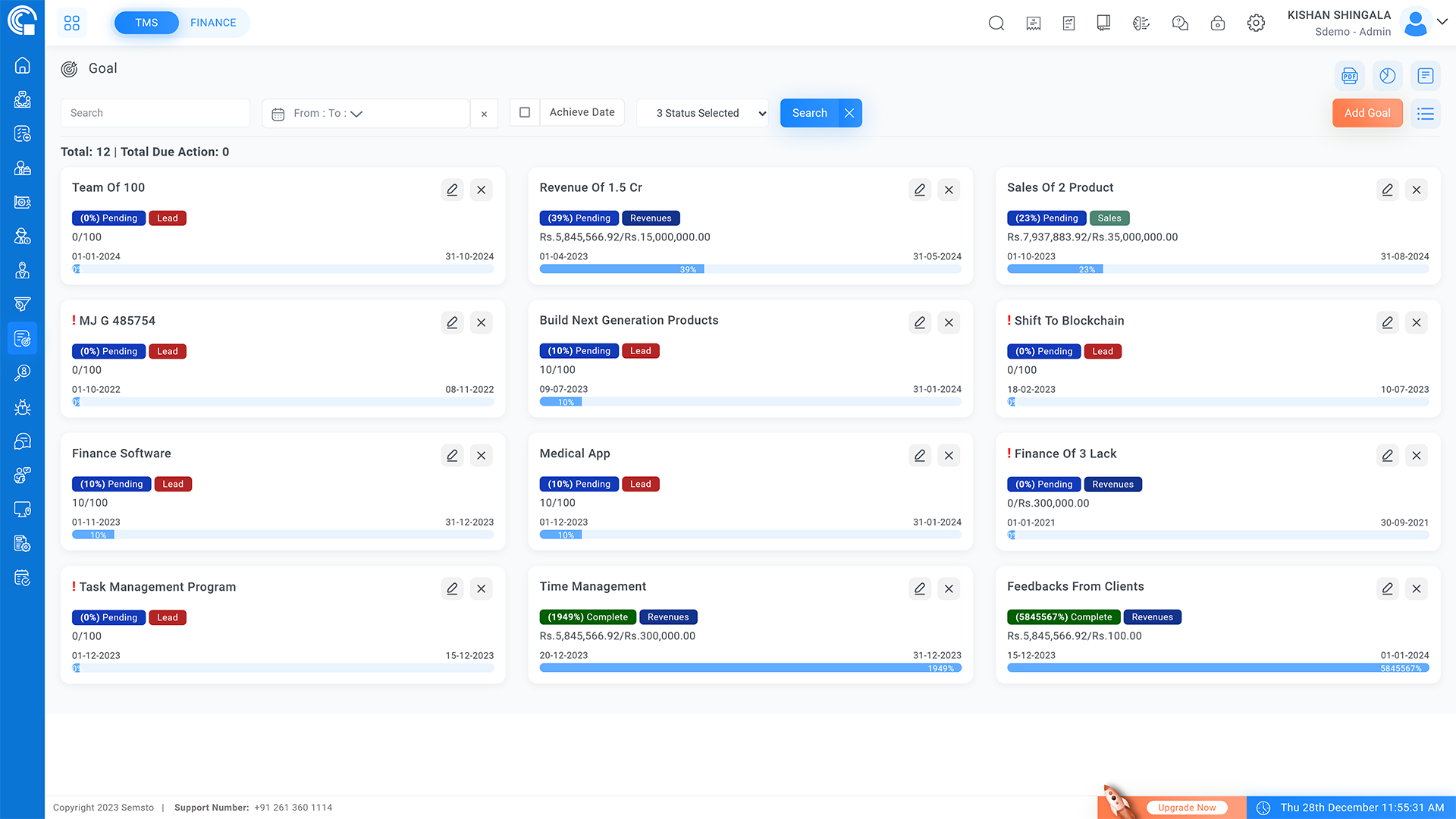
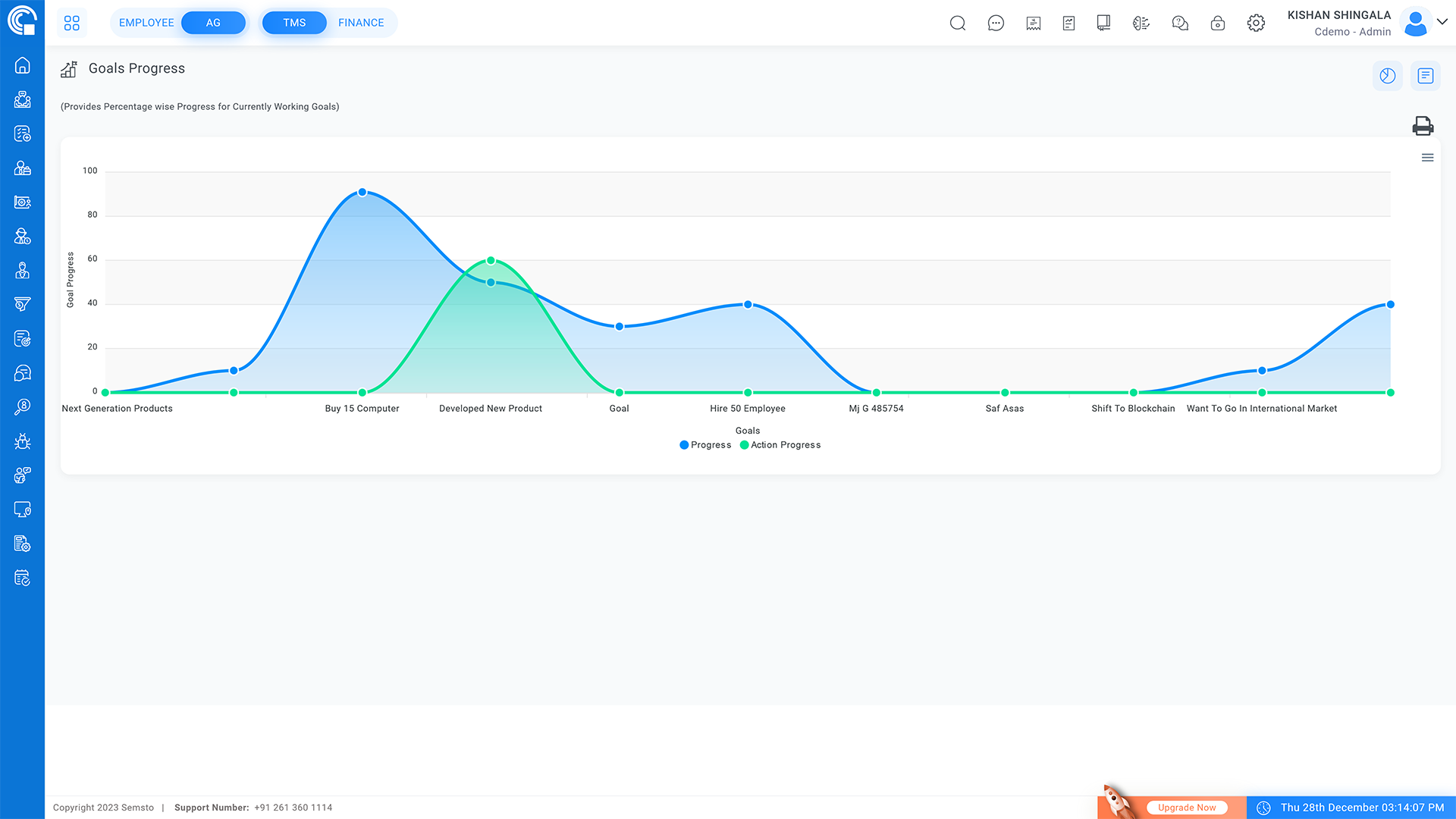
Wishlist
A wishlist represents tasks or objectives you plan to accomplish in the future. In the course of our daily routines, we often encounter various ideas and intentions that, over time, can be easily forgotten. Our system is designed to help you store and track these wishlist items. It enables you to monitor the time spent on each wishlist activity and provides a facility to save related documents or links, ensuring that your future goals and ideas are not only remembered but actively pursued.
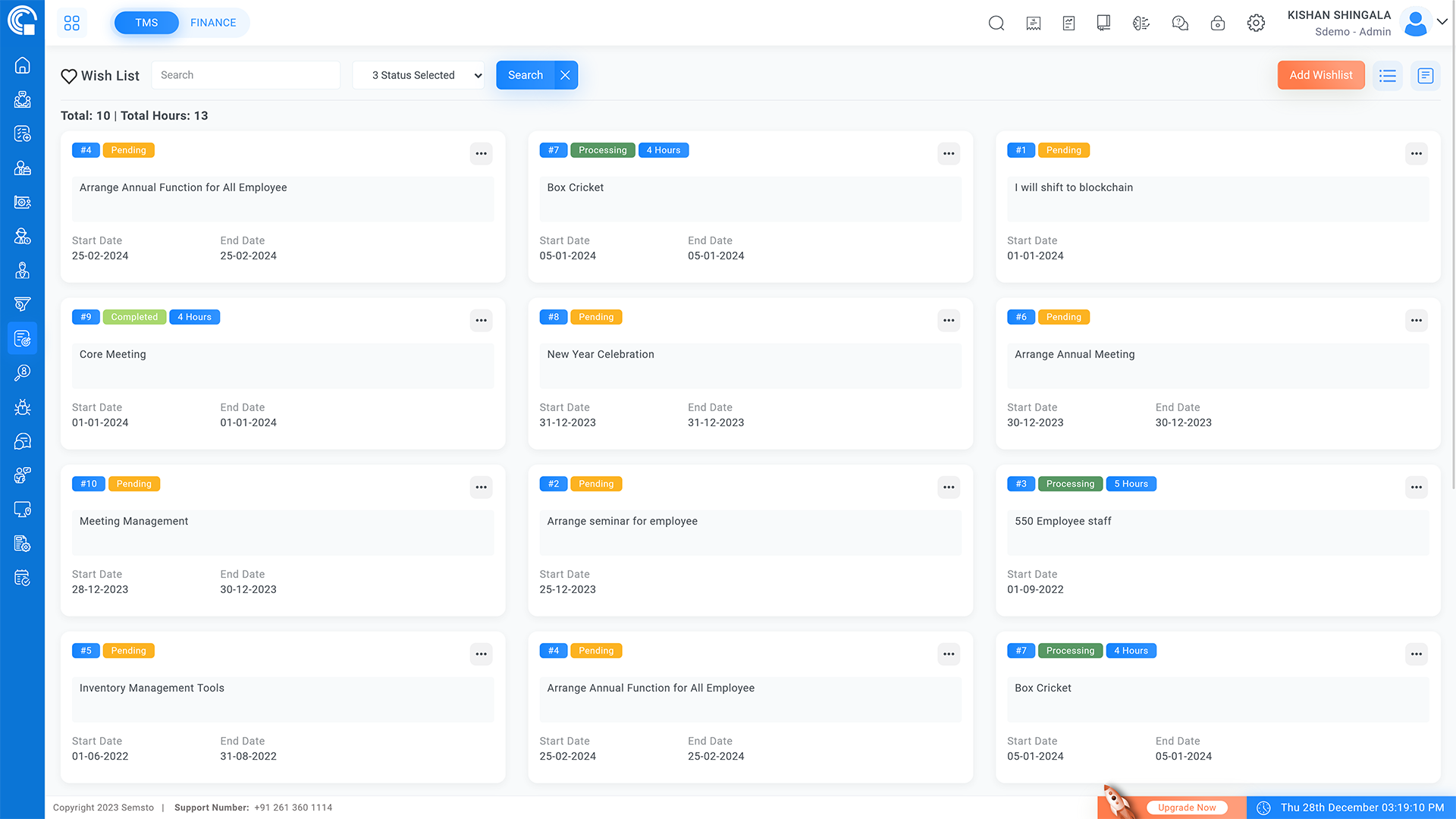
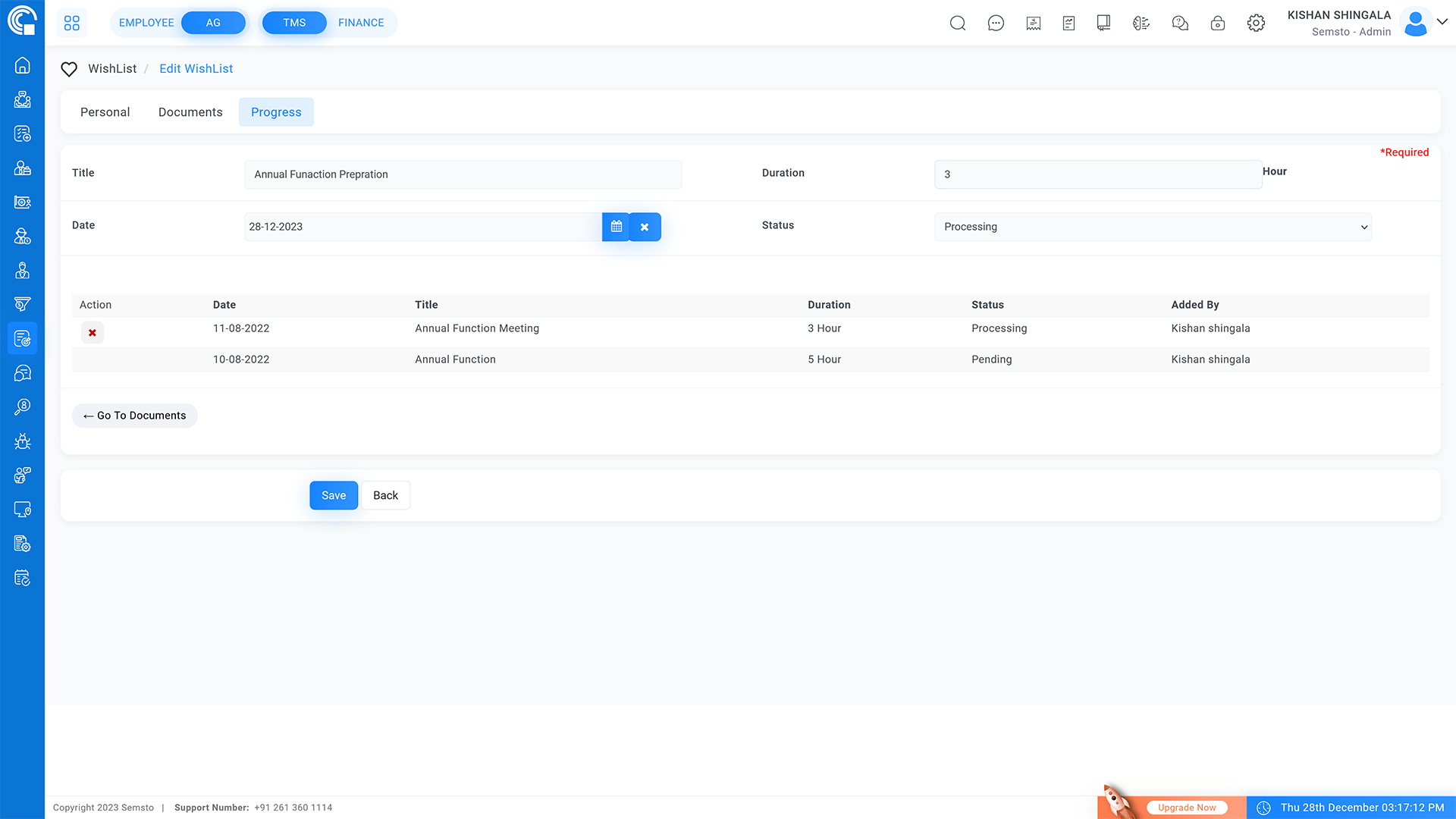
SWOT Analysis
SWOT analysis is a strategic planning technique used to identify Strengths, Weaknesses, Opportunities, and Threats related to business competition or project planning. This comprehensive approach helps in understanding internal capabilities and external influences, crucial for making informed decisions. Our tool enhances this process by offering a streamlined platform to conduct and track SWOT analyses. With our system, you can easily document and revisit each analysis, ensuring that insights gained from these evaluations are accessible and actionable, aiding in the continuous improvement and strategic direction of your business.
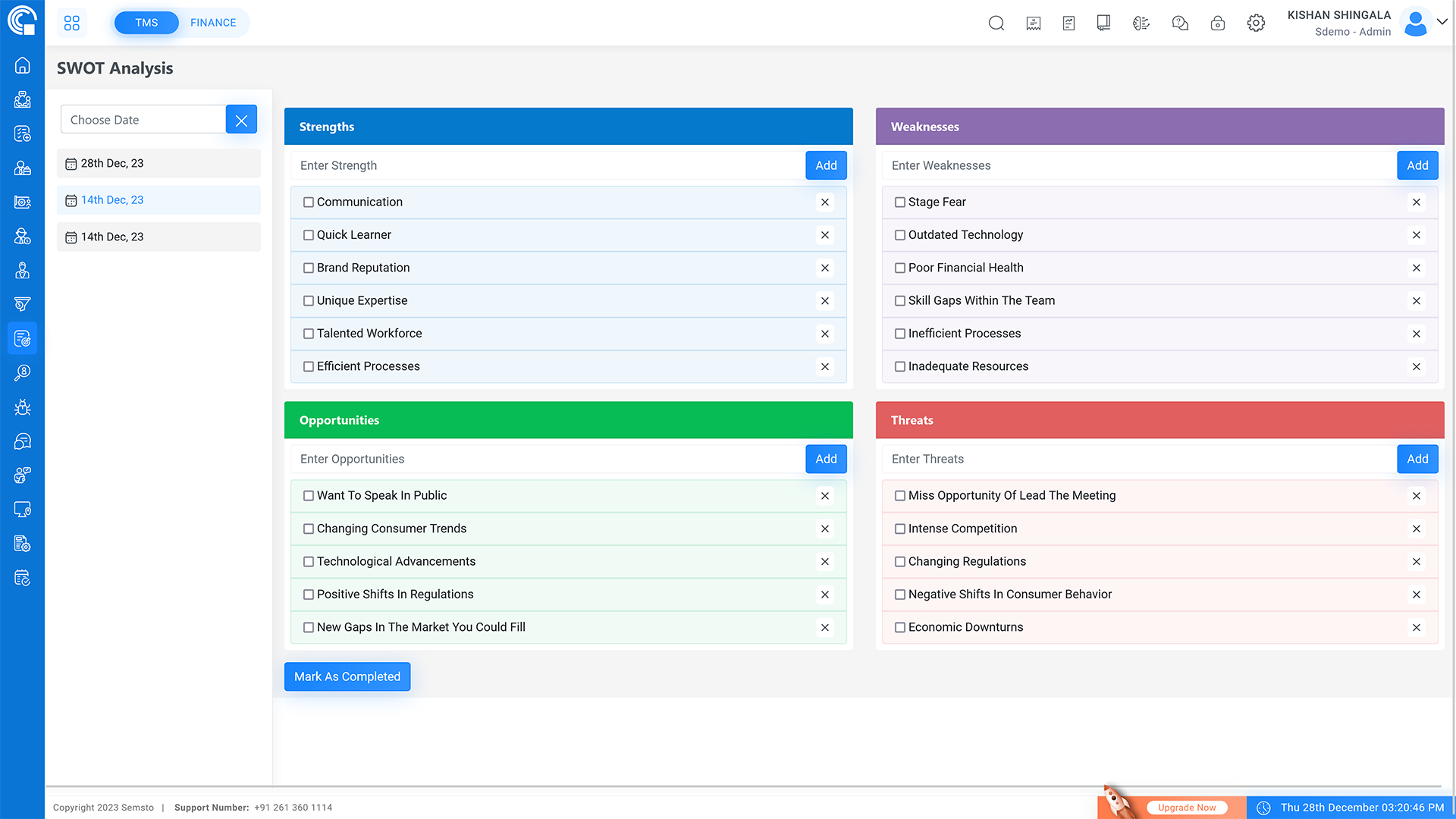
Pain Points
Lack of System for Goal Creation and Management
While creating goals is relatively easy, the challenge lies in effectively measuring and tracking their progress.
Forgetting Valuable Ideas Over Time
Often, good ideas are encountered, but as time passes, they are forgotten due to the absence of a system to capture and recall them.
Need for a Tool to Track SWOT Analysis
There is a significant need for a tool that allows for the tracking and management of SWOT analyses, beneficial for both management and team members to maintain strategic focus and continuity.
Why CEO Tools?
Goal management is an essential aspect of organizational success and helps organizations achieve their desired outcomes. The following are some of the key benefits of goal management in an organization:
Clarity of Purpose: Goal management clearly defines organizational objectives and establishes priorities for action, ensuring everyone works towards a common goal and reducing confusion.
Improved Performance: Setting clear, measurable goals allows organizations to track progress and measure success, identifying improvement areas and enabling continuous performance optimization.
Increased Motivation: Clear understanding of goals and their contribution to the organization's success boosts employee motivation and performance.
Better Alignment: Aligns resources and efforts towards common objectives, enhancing collaboration and minimizing duplicated efforts.
Enhanced Decision-Making: Provides a decision-making framework aligned with the organization's objectives and priorities.
Increased Flexibility: Regular review and adjustment of goals enable quick responses to changes in the business environment, facilitating adaptation to new opportunities or challenges.
In summary, goal management is crucial for organizational success, focusing efforts, optimizing performance, and achieving desired outcomes.
Wishslist
Wishlist management is indeed a vital asset for organizations, facilitating the prioritization and tracking of desired outcomes, projects, and initiatives. These elements, though not presently in active pursuit, are deemed crucial for future consideration. This approach offers several key benefits within an organizational context:
Strategic Focus: Wishlist management aids in aligning future initiatives with the organization's long-term objectives, ensuring that important but non-immediate goals are not overlooked.
Resource Planning: By identifying potential future projects, it enables better forecasting and allocation of resources, preparing the organization for upcoming challenges and opportunities.
Employee Engagement: This tool also encourages staff involvement by acknowledging and considering their input on future projects, boosting morale and fostering a sense of ownership.
Innovation and Growth: Keeping a wishlist promotes innovation, as it allows for the exploration and consideration of new ideas that can drive growth and development.
Adaptability: With a clear view of future aspirations, an organization can adapt more readily to changes in the business environment, seizing opportunities as they arise.
Continuous Improvement: Wishlist management embodies the principle of continuous improvement, ensuring that long-term plans are revisited and refined regularly.
Overall, wishlist management is a strategic component of organizational success, helping to maintain a clear vision for the future while fostering innovation, adaptability, and continuous growth.
Differentiate Goals and Wishlist
Wishlist and goals serve distinct purposes in the realm of organizational management, each playing a vital role yet differing in several fundamental aspects.
A goal is characterized by its specificity, measurability, and time-bound nature. It's a concrete target set by an organization or an individual, intended to be achieved within a stipulated timeframe. The clarity of goals makes them easily trackable, allowing for clear assessment of progress and accomplishment.
In contrast, a wishlist comprises a range of desired outcomes, initiatives, or projects that, while aspired to, are not the current focus of active pursuit. The elements of a wishlist are generally more open-ended, less measurable, and lack a specific timeline for realization. They represent aspirations or future possibilities rather than immediate action items.
To encapsulate, while goals are defined, measurable, and time-oriented objectives actively being worked upon, wishlists encapsulate a broader range of potential, future-oriented desires or aspirations, offering a space for less immediate but nonetheless significant visions for an organization or individual.


